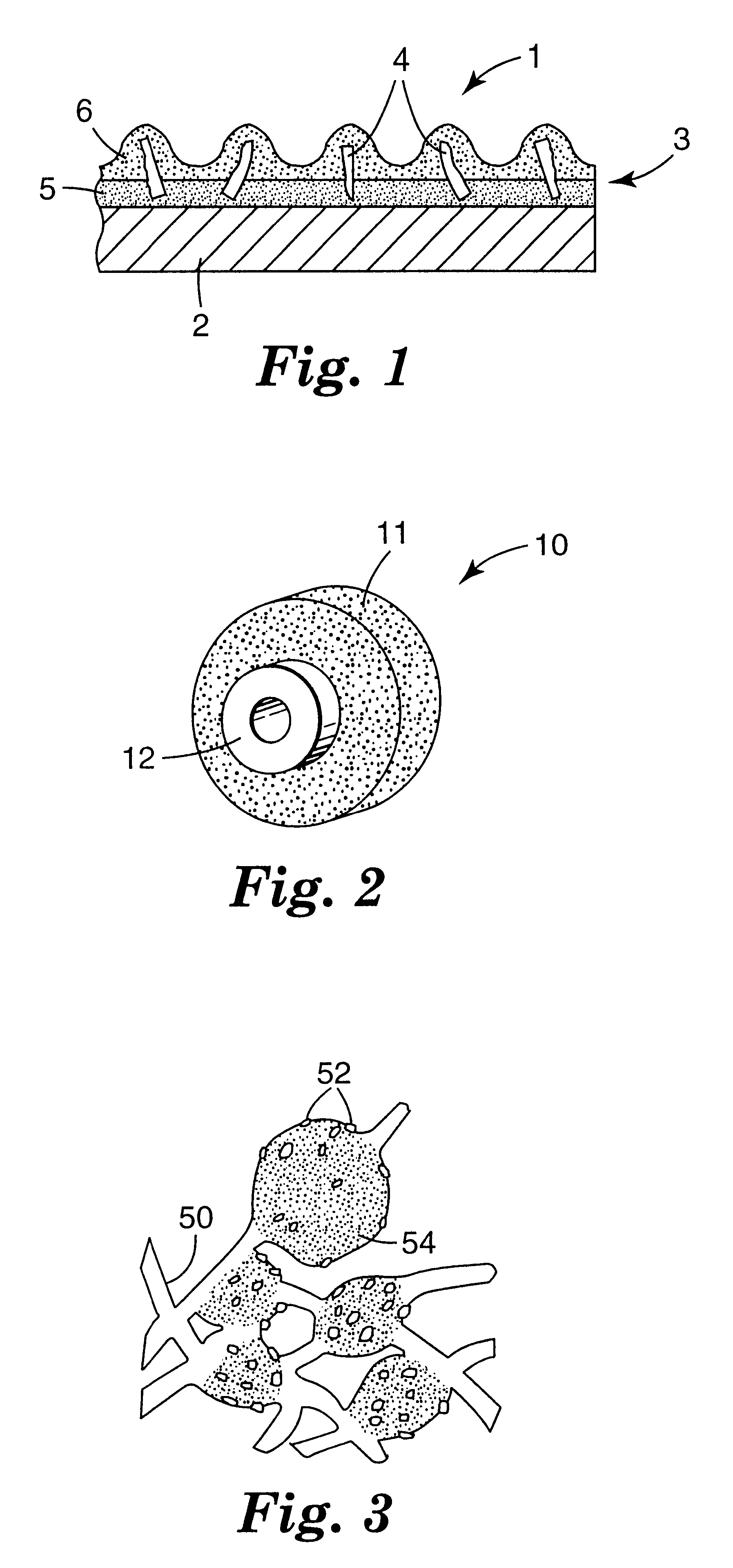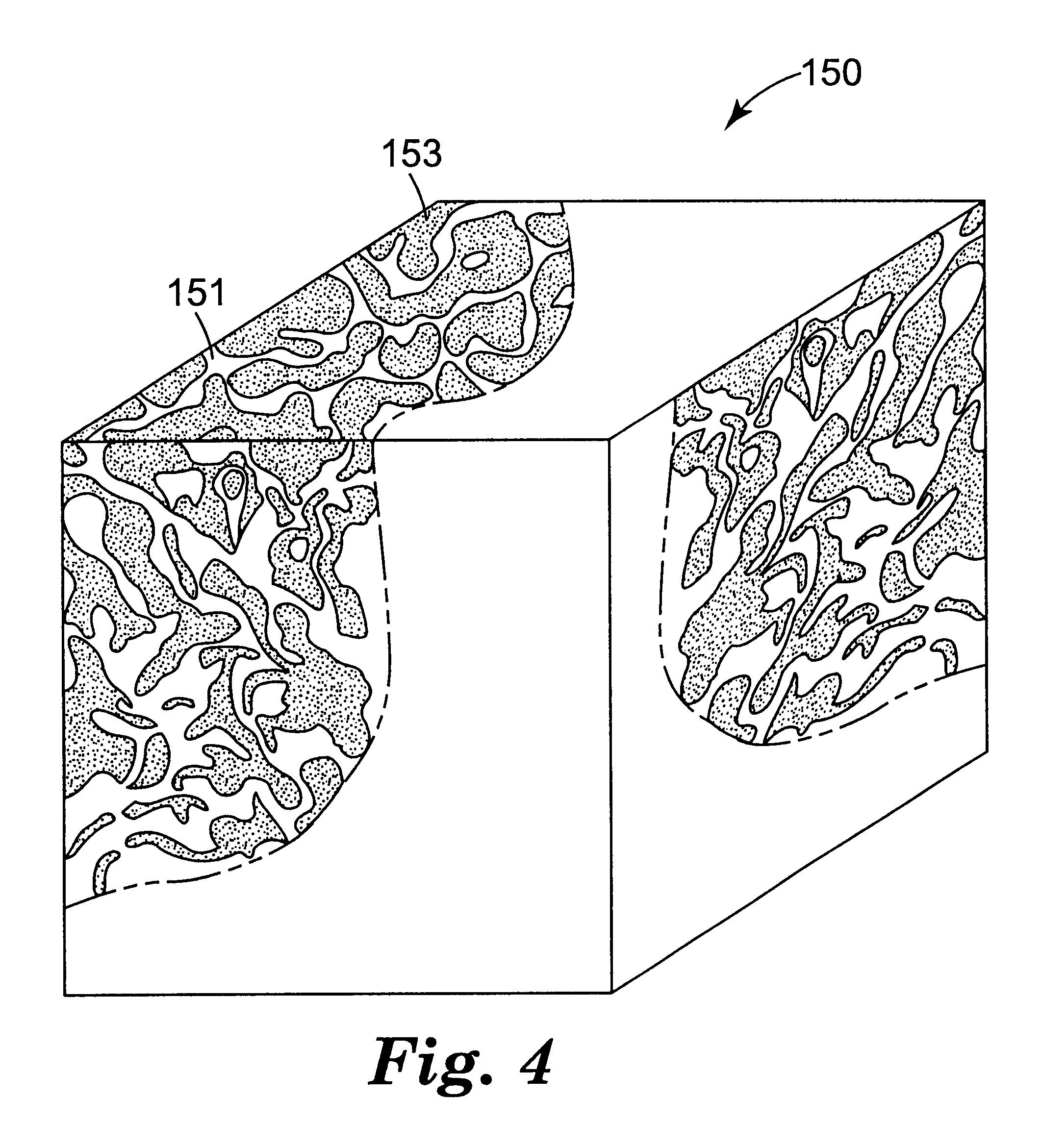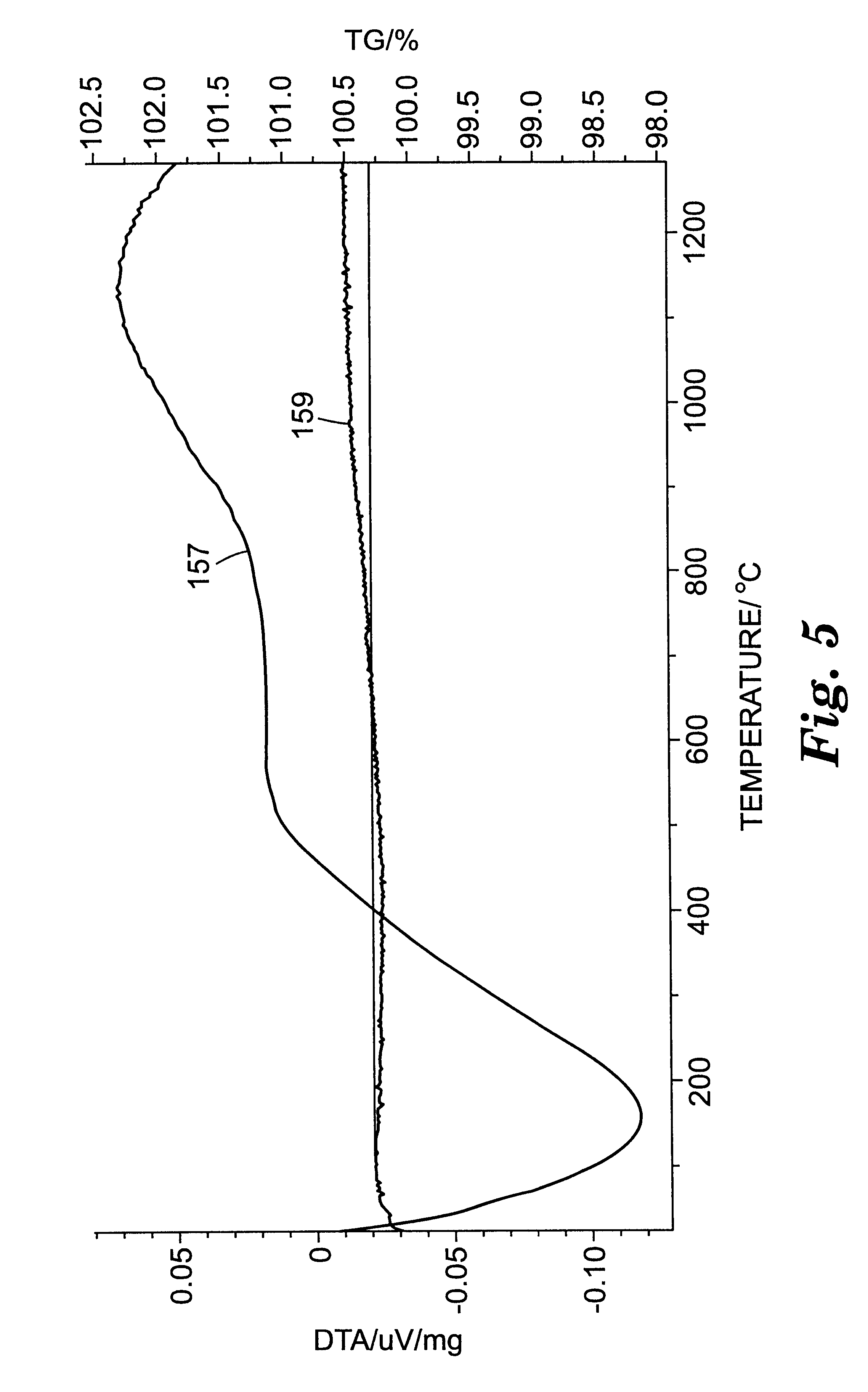Fused abrasive particles, abrasive articles, and methods of making and using the same
- Summary
- Abstract
- Description
- Claims
- Application Information
AI Technical Summary
Benefits of technology
Problems solved by technology
Method used
Image
Examples
example 1
Several Example 1 abrasive particles were also heated placed in a platinum crucible and heated to 1000.degree. C. at 50.degree. C. / hour, held at 1000.degree. C. for 8 hours (in air), and then cooled to room temperature at about 100.degree. C. / hour. The color of the abrasive particles after heating was the same as before heating (i.e., white-green). The average microhardness of the abrasive particles after heating was 16.0 GPa. The polished cross-sections prepared for the microhardness measurements were examined using the SEM in the secondary electron mode. The microstructure observed after heating was substantially the same as the microstructure observed before heating.
example 2
Example 2 fused material and abrasive particles were prepared as described in Example 1, except (a) the polyethylene bottle was charged with 173 grams of alumina powder ("APA-0.5"), 19.3 grams of magnesium oxide powder (obtained under the trade designation "MAGCHEM 10-325" from Martin Marietta Magnesia Specialties, Hunt Valley, Md.), 107.8 grains of yttrium oxide powder obtained from H. C. Starck, Newton, Mass.), 0.6 gram of a dispersing agent ("DURAMAX D-30005"), and 137.4 grams of distilled water, and (b) the powders were present in amounts to provide 64 mole % Al.sub.2 O.sub.3, 18 mole % MgO, and 18 mole % Y.sub.2 O.sub.3. The fulsed material was white in color.
FIG. 9 is a scanning electron microscope (SEM) photornicrograph of a polished section (prepared as described in Example 1) of fused Example 2 material. The photomicrograph shows a eutectic-derived microstructure comprising a plurality of colonies. The colonies are about 10-40 micrometers in size. Based on powder x-ray diff...
example 3
Grinding Performance of Example 3 and Comparative Examples A-C
The grinding performance of Example 3 and Comparative Examples A-C coated abrasive discs were evaluated as described above for Example 1 and Comparative Examples A-C. The results are reported in Table 2, below.
PUM
| Property | Measurement | Unit |
|---|---|---|
| Percent by mass | aaaaa | aaaaa |
| Percent by mass | aaaaa | aaaaa |
| Pressure | aaaaa | aaaaa |
Abstract
Description
Claims
Application Information
 Login to View More
Login to View More - R&D
- Intellectual Property
- Life Sciences
- Materials
- Tech Scout
- Unparalleled Data Quality
- Higher Quality Content
- 60% Fewer Hallucinations
Browse by: Latest US Patents, China's latest patents, Technical Efficacy Thesaurus, Application Domain, Technology Topic, Popular Technical Reports.
© 2025 PatSnap. All rights reserved.Legal|Privacy policy|Modern Slavery Act Transparency Statement|Sitemap|About US| Contact US: help@patsnap.com



